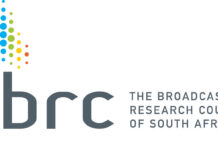There are as many definitions of what public relations is as there are public relations practitioners – definitions that range from the strange to the poetic:
Public relations helps an organization and its publics adapt mutually to each other.
– The Public Relations Society of America (PRSA)
PR is a never-ending story full of nuances, amazing characters and unexpected plot twists.
– Olka Kaźmierczak, fashion PR expert, founder of Fashion PR Talks academy
But the clue lies in the words: public, and relations. At Flow, public relations is about managing our client’s relationships with the public. You may choose to segment your “publics” (never quite sure about pluralising that word) and use different tools to develop those relationships but, in the end, your public relations is just that – your relationship with the public.
And with that, here are 10 misconceptions about public relations that we’d like to see die a quiet death:
- Public relations is about making sure we get coverage in main-stream media
There is a not-so-old adage doing the rounds that the media is dying – it’s not – but what it is doing is changing. If we don’t change our ideas about what the media is, we won’t be able to develop the relationships with our public(s) that we need to.
So what needs to change is not our ideas that public relations is about getting coverage – but certainly our ideas of what constitutes coverage. A story in a reputable online publication will be read by far more people than a free-to-read knock-and-drop. But that same free knock-and-drop may be the ideal vehicle for a different message, aimed at people who live within its target area.
And a clever and timely message in your own newsletter is now able to earn you immeasurable reputational boosting (or harm) as electronic mediums such as email and WhatsApp permit easy sharing.
It’s not about whether or not you recognise the outlet as media – it’s about whether or not your public(s) are using the outlet to get their news and form their opinions.
- Public relations is about relationships with journalists
Certainly having good relationships help – but no matter how good your relationship, unless the content you are offering the journalist is compelling and serves their needs (getting people to purchase or, at the very least, read their publication), they will not carry it.
- Any publicity is good publicity
This is an ever-green myth – but just not true … Remember the KFC chicken-washing incident? The value of that publicity was millions of rands – certainly enough to make sure that any public relations agency with value of coverage in its KPIs hit them that year. But KFC probably lost even more business. It’s about quality, not quantity!
- There are only certain media outlets that carry enough prestige to carry my story
The truth is, beggars can’t be choosers. It is true that sometimes, for our clients, we are in the happy position of performing a function I call “The Queen of No” – but it is extremely rare that people are clamouring to hear your story, and you need to take any opportunity you are given to tell it.
You never know who might be listening to Bosveld radio at the exact time you are being interviewed, and what might result from them hearing that interview – even if it’s just a journalist or content producer from a bigger publication with more clout.
- The only thing stopping journalists writing about us is ignorance and laziness
I would definitely couch this one differently – but there is a certain amount of truth in the ignorance part: journalists are not telepathic, and if you don’t tell them about you, they don’t know to look. But journalists don’t have a vested interest in boosting your business – they have a vested interest in boosting their publication and their own profiles.
The only thing stopping journalists writing about you is that you are not providing them with stories that create that win-win situation – bolstering your reputation while bolstering the reputation of the journalist and media outlet.
- We don’t owe the media anything
Maybe not, but a world without reputable media sources is a scary one – and we all like it when journalists investigate baddies. So let’s not see them as ravening hordes circling around looking for a car crash. Let’s treat them like the valuable professionals that they are, doing a necessary service in holding us accountable.
- If it’s not in traditional media, it doesn’t count – with a strong subtweet of ‘social media is not a serious place to carry our message’
See point 1 above. In PR 101 we learn about owned, earned and paid media.
Owned is what you can completely control – it includes the obvious things, like your regular newsletter, or your website, but there are also some less obvious examples of owned media, such as your invoices, and your email.
Paid is what you buy – your advertising. This works, but most people take paid adverts with a pinch of salt and aren’t terribly inclined to believe the claims made on behalf of products, people or places.
What PR is about is earning that coverage – creating something compelling enough to generate water cooler conversation – and social media is the best tool a public relations professional has ever been handed to make this happen.
- People’s opinions don’t matter
Oh, but they do. What your friend says about her bank has far, far more clout with you than any amount of made-up words or expensively re-designed logos when you are deciding where to save your hard-earned salary. And, what is true for you is true for your public(s) – it really, really matters what people think of you. They will base their decision on whether or not to believe you on what they think of you. Build up that bank of goodwill – it’s your cushion against disaster.
- A media release is an advertisement
A media release is much more like bait. You write it and, if you’ve tied the fly properly and the fishing conditions are good, someone’s interest will be sparked enough to think “my readers would like that” and then they will pursue the story and together you will create that win-win situation that ensures that your relations with your public(s) remain good.
In the words of Flow PR account director Allison MacDonald, “writing a media release is not the same as designing an ad and placing it. Just because you’ve written the release and sent it to the Sunday Times, does not mean that the Sunday Times will run it in full.” So don’t, whatever you do, kill the news in favour of the promotional copy.
- Advertising value equivalent is an excellent measure of return on investment
Advertising value equivalent – working out how much an advert of the same size as the story you’ve had published would have cost – is only an excellent way to placate people who don’t understand the importance of good relationships.
It’s much more important to have a good reputation, be present in the public eye at all times, not just in times of crisis, and slowly trickle into popular culture than it is to have occasional splashes of publicity measured in terms of what it might have cost to place similar advertisements. Who you are talking to and what they are saying about you is what should be being measured.





















































































